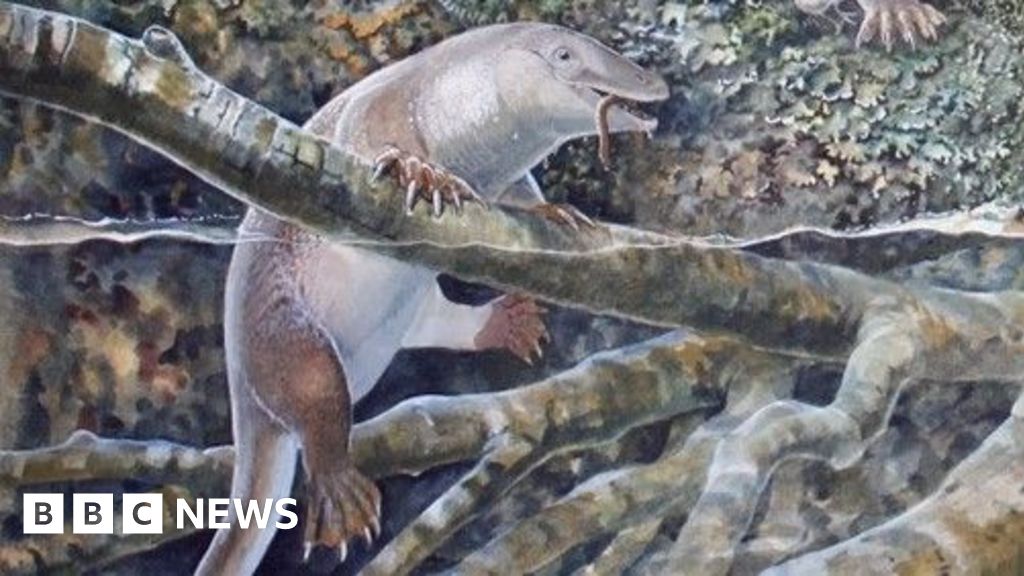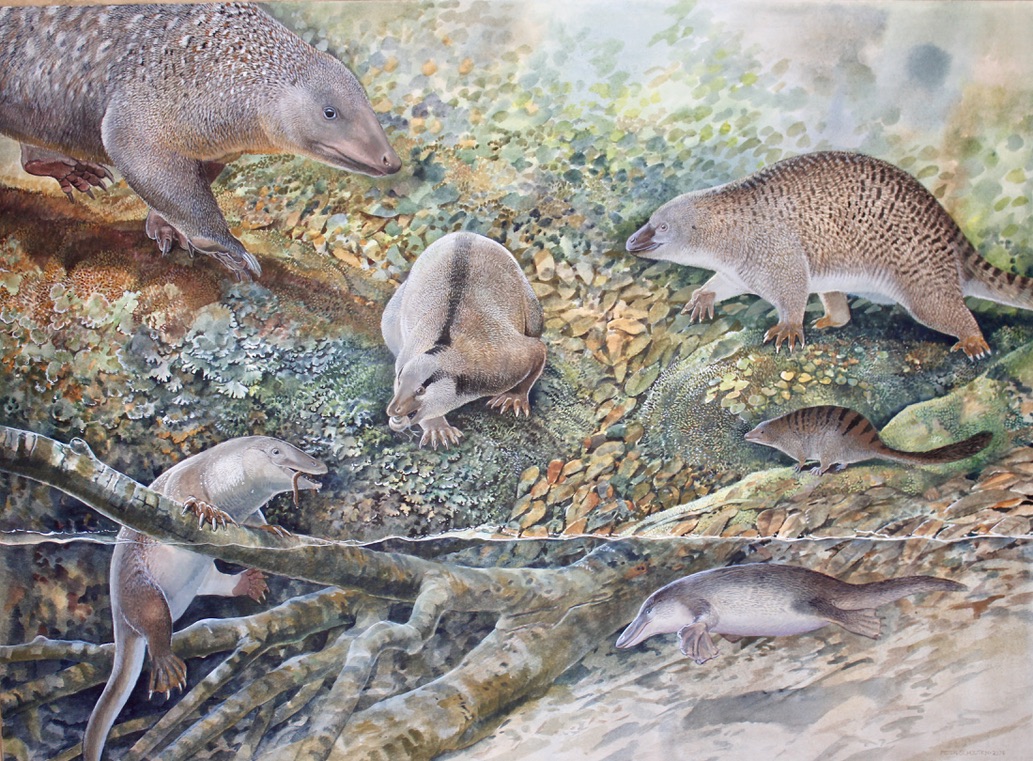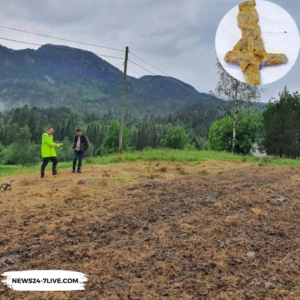Scientists have unearthed a new species of ancient monotreme nicknamed the “echidnapus,” from the opal fields of Lightning Ridge in northern New South Wales, Australia. The official name for this prehistoric creature is Opalios splendens. This find alongside other fossil evidence suggests that Australia once hosted an “age of monotremes” where these unique egg-laying mammals were both abundant and dominant.

Also Read: Koleken Inakayali: New Dinosaur Species with Tiny Arms Discovered in Patagonia
Fossilized jawbone pieces of Opalios splendens among six newly identified monotreme species were discovered in the opal fields of Lightning Ridge.
The newly found species resembling both the platypus and echidna has been informally named “echidnapus.” These findings indicate a previously unknown period in prehistoric Australia where monotremes thrived before the rise of marsupials.
The fossils were found 25 years ago by palaeontologist Elizabeth Smith and her daughter Clytie while sifting through discarded opal mine debris.
The specimens estimated to be about 100 million years old and were donated to the Australian Museum, where they remained unstudied until about two years ago when Prof. Tim Flannery discovered them.
The research was led by Prof. Tim Flannery, a mammalogist and involved a team from the Australian Museum Research Institute including Director Prof. Kris Helgen. Their findings were published in the Alcheringa: An Australasian Journal of Palaeontology.
The “echidnapus” exhibits a mix of features found in both the modern platypus and echidna particularly in its jaw and snout structure.
The fossils included jawbones of previously known Steropodon galmani along with three new species, Opalios splendens, Parvopalus clytiei, and Dharragarra aurora.
Parvopalus clytiei was identified as a tiny terrestrial mammal, while Dharragarra aurora resembled a modern platypus.
These fossils suggest that 100 million years ago, monotremes were more prevalent in Lightning Ridge than anywhere else on Earth.
Opalios splendens bridges a gap in the history of monotremes linking ancient species with today’s platypus and echidna.
The region of Lightning Ridge, now an arid outback was once a cold, wet forest bordering a vast inland sea during the Cretaceous period.
This environment supported a rich diversity of monotreme species providing new insights into the climatic and ecological conditions of ancient Australia.
The study’s authors hope their findings will spur more funding for targeted digs in Lightning Ridge to explore the region’s paleontological wealth.
Also Read: Egypt’s Pyramids Mystery May Have Been Solved by Scientists
More research is needed to confirm whether Australia indeed hosted a diverse range of monotremes and to understand the factors leading to their decline.
Opalized fossils are rare and opalized monotreme fossils are even more so, with monotreme fragments being one in a million compared to other types.
The fossils found by Elizabeth and Clytie Smith were described as “a revelation,” showcasing the prehistoric diversity of egg-laying mammals in Australia.
The research opens up questions about the disappearance of monotreme diversity between 100 million and 54 million years ago.
Monotremes, now limited to the platypus and several echidna species were once a successful order. The new discoveries include three previously unknown species from a single geologic formation at Lightning Ridge. This brings the total number of monotreme species identified from this site to six.
Lightning Ridge is known for its opal fields which have preserved a plethora of fossils. The newly identified species date back to 102-96.6 million years ago during the heyday of the dinosaurs.
The site is unique in that it contains exclusively monotreme fossils with no non-monotreme mammals found.
Also Read: Vatican Issues New Norms on Supernatural Phenomena
Opalios splendens, dubbed an ‘echidnapus’ exhibits a mix of platypus and echidna traits. It represents a pre-divergence form of modern monotremes.
Dharragarra aurora is identified as the oldest platypus-like fossil. Parvopalus clytiei is the smallest of the discovered species known from limited fossil fragments.
The six monotreme species found at Lightning Ridge vary in size and body plan suggesting a once-diverse group.
These species illustrate the evolutionary path of monotremes including the transition from toothy ancestors to toothless descendants.
Monotremes and theriiform mammals (marsupials and placentals) diverged in a world dominated by dinosaurs.
While theriiformes diversified greatly post-dinosaur extinction, monotremes remained relatively unchanged. Modern monotremes resemble their ancient counterparts found in the fossil deposits.
The opalization process at Lightning Ridge has resulted in beautifully preserved fossils. These fossils are often discovered by opal miners with some fossils being extremely rare compared to other opalized remains.
Researchers like Professor Tim Flannery and Professor Kris Helgen from the Australian Museum address the importance of these finds in understanding monotreme evolution.
The concept of a “monotreme radiation” during the Cretaceous period in Australia is proposed, though not all scientists are convinced of this definitive claim.
Continued excavation and study in Lightning Ridge are anticipated to reveal more about the diversity and evolution of monotremes. There is a call for more targeted digs and funding to explore potential fossil sites further.
The fossil record remains sparse leaving many questions about monotreme evolution unanswered. Key periods such as the 60-26 million year gap, lack fossil evidence, hindering a full understanding of their history.
Also Read: Shanidar Z: Face of a 75,000-Year-Old Neanderthal Woman Reconstructed






















